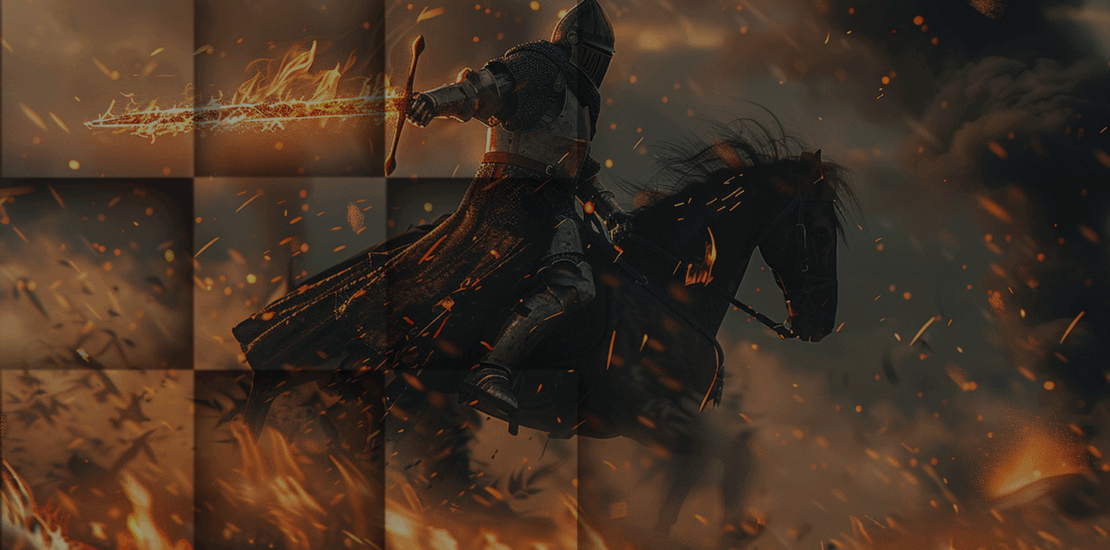Mastering Stylized Art: The Business Case for Differentiating Your Game in a Crowded Market
- July 11, 2025
- Posted by: iXie
- Category: Game Art

Ever played Cuphead or Hades? These games didn’t chase hyper-realism. Instead, they broke the mold with bold, stylized visuals that turned heads and won hearts.
In a world where many studios pour millions into lifelike graphics, a new wave of developers is asking a different question: what if style trumps realism?
Think back to the early 2010s. Photorealism was the gold standard. Every game aimed to look sharper, more “real.” But today, that chase comes at a high price: ballooning budgets, longer development cycles, and visuals that can feel dated within a few years.
Stylized art flips the script. It’s not just a creative choice, it’s a smart strategy. It helps games stand out in crowded stores, cuts production costs, and holds up beautifully over time. As players scroll faster and expect more for less, unique visual direction isn’t just nice to have, it is a business advantage.
So why are more developers ditching realism for style? Let’s explore the artistic evolution that’s reshaping the future of game visuals.
Contents
Understanding Stylization
Stylized art breaks from realism to deliver emotion, symbolism, and storytelling through abstraction. It exaggerates proportions, simplifies textures, and redefines scale to create distinct visual worlds. Compare the vivid surrealism of Wind Waker to the hyperrealism of Call of Duty – one invites timeless wonder, the other risks visual fatigue.
By contrast, realistic art aims to mirror life, leveraging high-fidelity rendering, lifelike textures, and accurate lighting models. While stunning, it often demands larger budgets, longer pipelines, and frequent updates to remain current.
Why Choose Stylized Art?
- For Timeless ROI: Stylized visuals don’t age with hardware generations. This minimizes the need for costly remastering or asset overhauls and preserves value over time.
- For Broader Market Reach: Stylized visuals resonate across demographics, from kids to core gamers, enabling creative themes and emotional storytelling that realism often limits.
- For Optimized Resource Allocation: Stylized design requires fewer polygons, simpler shaders, and shorter iteration cycles, enabling leaner development without sacrificing charm.
- For Unmistakable Brand Identity: A distinct visual style becomes part of the brand DNA. It powers discoverability, streamlines marketing, and boosts IP memorability in crowded storefronts.

Techniques and Tools
Stylized Character Design
To design memorable characters:
- Exaggerate silhouettes: Strong, distinct shapes are instantly recognizable, even in thumbnails.
- Use simplified details: Favor iconography over intricacy. Think Overwatch’s readable characters.
- Limit color palettes: Cohesive tones amplify visual identity and help with animation clarity.
Stylized Environment Design
- Play with scale: Use disproportionate sizes (e.g., massive trees, tiny doors) to evoke mood or lore.
- Experiment with textures: Hand-painted textures or toon shaders can establish a signature look.
- Layer visual storytelling: Environments should feel lived-in with props that hint at history.
Recommended Tools for Stylized Art:
- Blender: For stylized 3D modeling and NPR rendering.
- Procreate / Photoshop: For 2D concepting, hand-drawn aesthetics, and texture creation.
- Unity / Unreal Engine: Both support toon shading, custom render pipelines, and post-processing for stylized visuals.
Substance Painter: Customize stylized texturing workflows with brushes and masks.
Case Studies
Hollow Knight: Indie Success Through Hand-Drawn Precision
Team Cherry’s 2D art direction became a commercial powerhouse. The game’s minimalist yet rich world earned it critical acclaim and strong long-tail sales, proving that distinctive 2D art can yield significant ROI and long-term community loyalty.
Cuphead : Vintage Vision Turned Marketing Engine
Cuphead’s 1930s cartoon look drove global buzz. With millions of units sold, Netflix deals, and awards in tow, its singular aesthetic became a viral differentiator and brand powerhouse. The game didn’t just succeed because of its visuals. It succeeded because its visuals were unlike anything else.
Hades : Comic Clarity for Gameplay Cohesion
Supergiant Games used bold, comic-inspired visuals to enhance mechanical clarity. That artistic direction contributed to its addictive loop, critical success, and massive sales, demonstrating that clear, stylized visuals improve gameplay retention and product appeal.
Best Practices
1. Define a Visual Bible Early
Codify rules for line weight, shading, colors, and lighting. This serves as a project management tool to reduce onboarding time, prevent rework, and maintain cross-team alignment.
2. Enforce Art Style Consistency
Drift leads to brand dilution. Schedule visual QA checkpoints to protect IP clarity, reduce production risk, and ensure timely delivery.

3. Leverage Exaggeration Thoughtfully
Strategic exaggeration drives emotional resonance and memorability. When aligned with gameplay, it elevates player immersion and engagement metrics.
4. Balance Creativity with UI Clarity
Overly ornate visuals can compromise usability. Design with player interaction at the core to optimize for retention, ratings, and monetization.
5. Involve Artists Early in Game Design
Artists aren’t decorators; they are world architects. Involving them early unlocks synergistic ideas, which can lead to market-defining experiences.

Conclusion
Stylized visuals aren’t just about “looking different.” They’re about being unforgettable. In an industry racing toward realism, stylization offers breathing room for creative identity, budget-conscious scalability, and emotional resonance. From indie darlings to AAA experiments, the games we remember most are often the ones that dared to look different.
If your studio’s next project aims to stand out, scale smart, and stir emotion, stylized art may be your sharpest tool.
FAQs
Stylized art intentionally distorts or abstracts reality to express mood, tone, or theme rather than depict realism. It relies on symbolic shapes, exaggerated motion, and thematic color palettes.
Blender (with Grease Pencil), ZBrush (for stylized sculpting), and Procreate or Photoshop are top picks for stylized design workflows.
They achieve longer shelf life, stronger brand recall, lower production overhead, and wider platform compatibility.
Hollow Knight, Cuphead, Hades, Borderlands, Okami, Journey, The Legend of Zelda: Wind Waker, and Ori and the Blind Forest.

